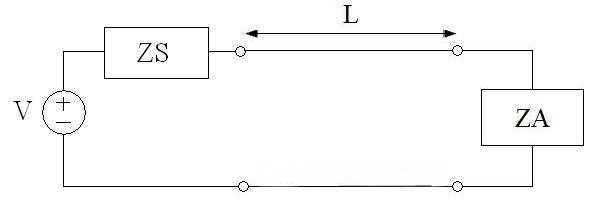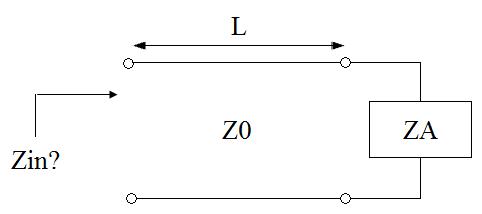Products Category
- FM Transmitter
- 0-50w 50w-1000w 2kw-10kw 10kw+
- TV Transmitter
- 0-50w 50-1kw 2kw-10kw
- FM Antenna
- TV Antenna
- Antenna Accessory
- Cable Connector Power Splitter Dummy Load
- RF Transistor
- Power Supply
- Audio Equipments
- DTV Front End Equipment
- Link System
- STL system Microwave Link system
- FM Radio
- Power Meter
- Other Products
- Special for Coronavirus
Products Tags
Fmuser Sites
- es.fmuser.net
- it.fmuser.net
- fr.fmuser.net
- de.fmuser.net
- af.fmuser.net ->Afrikaans
- sq.fmuser.net ->Albanian
- ar.fmuser.net ->Arabic
- hy.fmuser.net ->Armenian
- az.fmuser.net ->Azerbaijani
- eu.fmuser.net ->Basque
- be.fmuser.net ->Belarusian
- bg.fmuser.net ->Bulgarian
- ca.fmuser.net ->Catalan
- zh-CN.fmuser.net ->Chinese (Simplified)
- zh-TW.fmuser.net ->Chinese (Traditional)
- hr.fmuser.net ->Croatian
- cs.fmuser.net ->Czech
- da.fmuser.net ->Danish
- nl.fmuser.net ->Dutch
- et.fmuser.net ->Estonian
- tl.fmuser.net ->Filipino
- fi.fmuser.net ->Finnish
- fr.fmuser.net ->French
- gl.fmuser.net ->Galician
- ka.fmuser.net ->Georgian
- de.fmuser.net ->German
- el.fmuser.net ->Greek
- ht.fmuser.net ->Haitian Creole
- iw.fmuser.net ->Hebrew
- hi.fmuser.net ->Hindi
- hu.fmuser.net ->Hungarian
- is.fmuser.net ->Icelandic
- id.fmuser.net ->Indonesian
- ga.fmuser.net ->Irish
- it.fmuser.net ->Italian
- ja.fmuser.net ->Japanese
- ko.fmuser.net ->Korean
- lv.fmuser.net ->Latvian
- lt.fmuser.net ->Lithuanian
- mk.fmuser.net ->Macedonian
- ms.fmuser.net ->Malay
- mt.fmuser.net ->Maltese
- no.fmuser.net ->Norwegian
- fa.fmuser.net ->Persian
- pl.fmuser.net ->Polish
- pt.fmuser.net ->Portuguese
- ro.fmuser.net ->Romanian
- ru.fmuser.net ->Russian
- sr.fmuser.net ->Serbian
- sk.fmuser.net ->Slovak
- sl.fmuser.net ->Slovenian
- es.fmuser.net ->Spanish
- sw.fmuser.net ->Swahili
- sv.fmuser.net ->Swedish
- th.fmuser.net ->Thai
- tr.fmuser.net ->Turkish
- uk.fmuser.net ->Ukrainian
- ur.fmuser.net ->Urdu
- vi.fmuser.net ->Vietnamese
- cy.fmuser.net ->Welsh
- yi.fmuser.net ->Yiddish
How do you connect a receiver or transmitter to an antenna?
How do you connect a receiver or transmitter to an antenna? Simple - atransmission line. You are nodoubt familiar with transmission lines (sometimes abbreviated as tx lines).If you plug any electric device into a wall outlet, the wiresthat connect the wall outlet to the device is a transmission line.
However, transmission lines behave very oddly at high frequencies. In traditional (low-frequency) circuit theory,wires connect devices, but have zero resistance. There is no phase delay across wires; and a short-circuitedline always yields zero resistance.
For high-frequency transmission lines, things behave quite differently. For instance, short-circuitscan actually have an infinite impedance; open-circuits can behave like short-circuited wires. The impedanceof some load (ZL=XL+jYL) can be transformed at the terminals of the transmission line to an impedancemuch different than ZL. The goalof this tutorial is to understand transmission lines and the reasons for their odd effects.
Let's start by examining a diagram. A sinusoidal voltage source with associated impedance ZS isattached to a load ZA (which could be an antenna or some other device - in the circuit diagramwe simply view it as an impedance called a load). The load and the source are connectedvia a transmission line of lengthL:

In traditional low-frequency circuit analysis, the transmission line would not matter. As a result,the current that flows in the circuit would simply be:

However, in the high frequency case, the lengthLof the transmission line can significantly affectthe results. To determine the current that flows in the circuit, we would need to know what the input impedanceis, Zin, viewed from the terminals of the transmission line:

The resultant current that flows will simply be:

Since antennas are high-frequency devices (in the sense that their size is on the order of a half wavlength or more),transmission line effects are often VERY important. That is,if the lengthLof the transmission line significantly alters Zin, then the current into the antennafrom the source will be very small. Consequently, we will not be delivering power properly to the antenna. Thesame problems hold true in the receiving mode: a transmission line can skew impedance of the receiver sufficientlythat almost no power is transferred from the antenna.
Hence, a thorough understanding of antenna theory requires an understanding of transmission lines. A great antennacan be hooked up to a great receiver, but if it is done with a length of transmission line at high frequencies, thesystem will not work properly.
Examples
of common transmission lines include the coaxial cable, the microstrip
line which commonly feedspatch/microstrip antennas, and the two wire
line:

When are transmission line effects significant?
We know that at low frequencies, transmission lines don't affect power transfer in practical applicationswe use every day. However, at high frequencies, even short lengths of transmission lines will affect thepower transfer. Why is there this difference?
The answer is fundamentally important:
It is not the length of the transmission line, or what frequency we operateat that determines if a transmission line will affect a circuit. What matters is how long the transmission line is,measured in wavelengths at the frequency of interest.
If a transmission line has a length greater than about 10% of a wavelength, then the line length will noticablyaffect the circuit's impedance.Let's look at some examples to make this clear:
Let's say you plug your vaccuum cleaner into a wall outlet. The chord (transmission line) that connects the powerto the motor is 10 meters long. The power is supplied at 60 Hz. Should transmission line effects be taken into account?:
Answer: The wavelength at 60 Hz is 5000 km (5 million meters).Hence, the transmission line in this case is 10/5,000,000 = 0.000002 wavelengths (2*10^-6 wavlengths)long. As a result, the transmission line is very short relative to a wavelength, and therefore will not have muchimpact on the device.
Example #2. Suppose a wireless device is transmitting at 4 GHz. Suppose also that a receiver is connectto amicrostrip antennavia a microstrip transmission line that is 2.5 centimeters (cm) long. Shouldtransmission line effects be taken into account?
Answer: The wavelength at 4 GHz (4*10^9 Hz) is 7.5 cm. The transmission line is 2.5 cm long. Hence,the transmission line is 0.33 wavelengths long. Since this is a significant fraction of a wavelength (33%),the length of the line must be taken into account in analyzing the reciever/transmission line/antenna system.
Hopefully we now understand when a transmission line will affect the circuit. If you don't, read the lasttwo examples again until you understand. What we don't understand yet, is how the transmission linemesses things up. This will be covered in the next sections.

